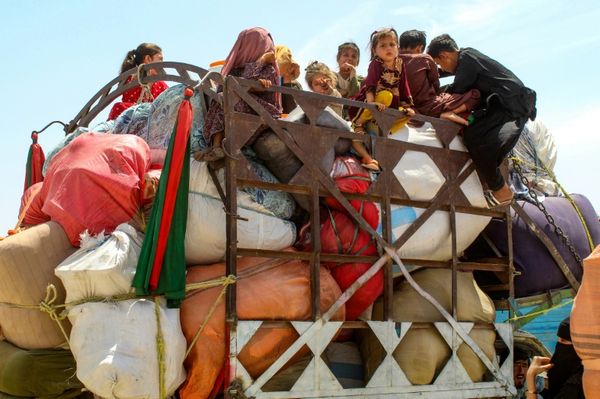
How did the language you’re reading this in come to exist? The Indo-European family of languages covers most of Europe, the Iranian plateau, northern India and parts of Asia. Its members are spoken by almost half of all living people, and they all stem from a common source. English, Hindustani, Spanish, Russian, Sanskrit, Greek, Latin, Norse and many others (more than 400 still exist) can all be traced back to this starting point: Proto-Indo-European (PIE). Laura Spinney’s new book tells the story of how a language that may initially have been spoken as a kind of lingua franca by only a few dozen people evolved into the mother tongues of billions.
The words we use feel inevitable. We take them for granted. But they began life about 6,000 years ago, when copper was being smithed in the lands to the west of the Black Sea. Spinney says “an aura of magic must have hovered around the early smiths, who drew this gleaming marvel from blue-green rock”. New language hovered around them, too.
Novel technologies needed a novel vocabulary to describe them. The goods produced were transported across the Black Sea, which required the language of travel and exchange, as well as words that prepared merchants to meet with bears, boars and lions. Smithing brought new specialisations: metallurgy, casting, mining, charcoal-burning. All had to be named.
As the traders travelled, the words they shared went with them across the Black Sea and then around the world: from the forests of Romania to the steppe of Odessa, now with the development of larger and larger settlements, now with steppe herders becoming global traders, now with roads, now with the crossing of the Volga, sped up by the wheel, and on to the edge of China.
Spinney draws on a wealth of recent evidence to tell this story, combining linguistics, archaeology and genetic research to trace the movement of people and their language. Making these links is not straightforward. PIE was not written down; it has been reconstructed by comparing the languages that evolved from it. The word for daughter, for example, is very similar in English, Sanskrit, Greek, Armenian and Lithuanian (daughter, dúhitr, thugátēr, dustr, duktė). This has all been used to deduce the PIE word *dhugh2ter. (The h2 might have sounded like the French guttural r. The asterisk denotes that the word is reconstructed.)
There are between 1,000 and 2,000 PIE words, and Spinney’s book is at its most interesting when dealing with them. The word *h2ster has become “star”. *kerd is the root of “cardio” and “heart”. The phrase *kerd dheh meant “to put your heart”, which became śraddhā in Sanskrit (believe) and crēdo in Latin; *ghostis is “guest-friendship”, a mutual obligation of guest and host. As humans travelled and traded, *ghostis was probably the concept that gave them safe passage. It echoes another word *ghes, “to eat”. Safe passage meant good eating.
How we know this, though, is a little uncertain. *ghostis is the reconstructed root of words in Gothic (gasts), Old English (giest), and Latin (hospes, hostis). (That Old English word giest, meaning “an accidental guest, a chance comer”, is the root of our modern “guest”.) From these known words, linguists deduce the original in Proto-Indo-European. But deductions are not certainties. Whether *ghes really is echoed in *ghostis is debated. And this process is far from complete. Even though PIE is the most studied of all proto languages, there is not yet a reconstructed word for metal, despite those Black Sea coppersmiths.
This reflects a larger difficulty. We can only read as far back as 5,000 years. To go further, we need genetics and archaeology. “There is no one-to-one mapping of language, culture and genes,” Spinney says. We see links and similarities between population movements and language movements, and this gives some external evidence for when languages began to change. Loan words, for example, can help date a language, but that sort of evidence is rare, and knowing when one group of people started marrying another provides additional insight. But the reconstructions are still enticing. However dimly we can see back that far, we can see something.
Scholars think PIE must have existed among the coppersmiths because that is long enough ago for the various descendent languages to have branched off from them, given what we know about the rate of language change. Genetic analysis shows intermarrying around the Black Sea, suggesting multilingual children – vectors for the development of PIE out of a trading lingua franca.
In Spinney’s account, the Yamnaya nomads take PIE from the steppe to the edge of China, back into Europe, down through India and Iran. The combination of evidence from different disciplines makes this a compelling case. In India today, for example, speakers of Sanskrit-derived languages have more steppe ancestry than non-Sanskrit language speakers.
We don’t yet know why those PIE speakers started travelling, why they went so far east. Recent research, impeded by the Ukraine war, has identified Mykhailivka, in southern Ukraine, as an important site where traders, and languages, converged. Spinney presents the best of our knowledge, which is that PIE spread through migration: trade among nomads gave us almost half the languages of the modern world.
But new revelations await. The work continues. As we face the dominance of global English, the potential erosion of languages around the world, and linguistic nationalism, PIE is in some ways a mirror of humanity. As Spinney says in her conclusion, people are moving around the Black Sea today for the same reasons they did 6,000 years ago: commerce, war and climate change.
The language you’re reading this in will change. It will change as it has always done. When Proto-Indo-European came back to Europe around 2000BC there were about 7 million people living there. That it took over is extraordinary. Spinney says it is as if Italian had taken over New York in the early 20th century. However scary we might find such a future, one in which languages rise and fall, cultures come and go, our past suggests it is inevitable.
• Proto: How One Ancient Language Went Global by Laura Spinney is published by William Collins (£22). To support the Guardian and Observer, order your copy at guardianbookshop.com. Delivery charges may apply







